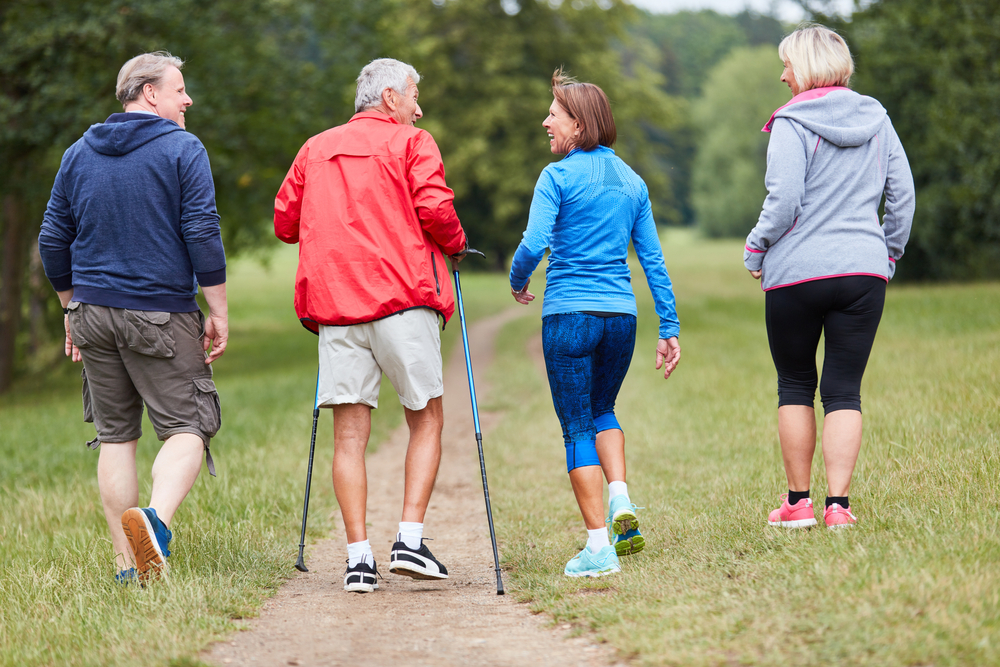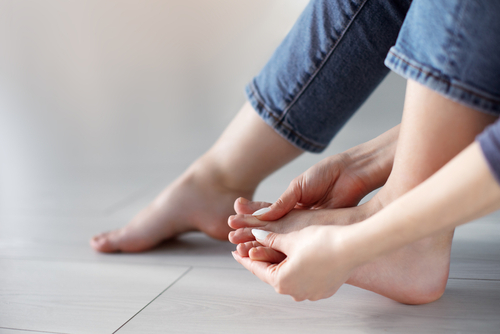Many people want to know if there is a cure for PAD, peripheral artery disease, and how to reverse it. Technically, there is no cure for PAD, meaning it cannot be eradicated, but it is reversible. Specifically, studies show that PAD treatment can slow its progression and potentially reverse its symptoms.
Peripheral Artery Disease (PAD) is a term for blockages or plaques that restrict blood flow in the arteries outside the heart. Plaque buildup and blockages around the lower extremity arteries inhibit blood flow to the legs and feet. Unfortunately, blocked arteries are often silent until a very late stage when ulceration or infection lead to gangrene.
Early diagnosis is vital to reversing peripheral artery disease. The sooner you start natural treatment through lifestyle changes, the better your chances of stopping PAD from worsening. Even people at high risk of developing peripheral artery disease should start a treatment program immediately.

How to Treat and Manage PAD
Peripheral artery disease treatments include lifestyle changes, medications, and surgery, in that order. Your doctor will first try natural remedies you can do mostly independently, then prescribe medication if more help is needed. Surgery is a last resort for symptoms that do not improve with lifestyle changes and medication.
Since curing peripheral artery disease is not possible, treatment for pad aims to improve quality of life by easing pain, managing other symptoms, and reducing the risk of additional cardiovascular events.
Atherosclerosis and PAD
Atherosclerosis is directly linked to peripheral artery disease (PAD), a common circulatory problem. In PAD, atherosclerotic plaques build up in the arteries that supply blood to the limbs, typically the legs. This buildup restricts blood flow, causing symptoms such as leg pain when walking (claudication), numbness, and in severe cases, critical limb ischemia. The latter can lead to sores, ulcers, and even the risk of limb amputation if not adequately managed.
The process in PAD is the same as in coronary or carotid artery disease, where atherosclerosis affects the heart and brain’s blood vessels, respectively. The risk factors are also similar and include smoking, diabetes, hypertension, high cholesterol, and aging. Management of PAD, therefore, involves both addressing the systemic nature of atherosclerosis—through lifestyle changes and medications to control blood pressure, cholesterol, and diabetes—as well as specific treatments to improve blood flow in the affected limbs, such as angioplasty, stenting, or bypass surgery.
Thus, understanding and managing atherosclerosis is crucial for preventing and treating PAD and its potential complications.
Medically, statins and other lipid-lowering medications have demonstrated efficacy in reducing plaque burden. These drugs not only lower lipid levels but also stabilize plaques, reducing the risk of rupture, which can lead to heart attacks or strokes.
Peripheral Artery Disease Self-Care
Lifestyle Changes
The first step to treating PAD is to make lifestyle adjustments to improve blood flow, lower blood pressure, lose excess body fat, and prevent plaque build-up. With Peripheral artery disease, self-care is a first line of defense in your day-to-day walk with this condition.
Your vascular specialist or primary care physician will focus on two primary changes: exercise and no tobacco use.
Additional changes include:
- Eating a well balanced diet with plenty of fiber
- Staying away from over-the-counter cold medications that constrict blood vessels
- Maintaining a healthy weight
- Taking care of your mental health
- Caring for your feet
All these changes can help you reduce your risk factors and manage other health conditions like diabetes, blood pressure, and high cholesterol, which, untreated, can contribute to worsening peripheral artery disease.
Exercise
Exercise is the best way to reduce PAD symptoms naturally; exercise can also reduce the risk of developing another cardiovascular disease like heart disease, stroke, or heart attack. Aside from helping PAD, exercise improves your energy, mood, self-esteem, and sleep quality.
Further, walking is the best exercise for peripheral artery disease treatment. Walk as long as possible until your leg pain is too much. Then, rest until the pain goes away and start walking again.
Repeat the start and stop exercise for 30 minutes at minimum, or keep going until you can no longer handle the pain. Perform this exercise several times a week.
Another exercise option is walking on a treadmill while supervised by a physical therapist. You can also try trainer-led group exercise sessions with other people who have CVD. These sessions may be two hours per week for three months.
With exercise treatment, consistency is key. Exercise frequently and regularly. Doing less intense exercise more often is better than doing more intense exercise less often. Move at a pace you can sustain to ensure your symptoms will improve.
Consult your doctor or vascular specialist about exercise plans and other lifestyle changes to guarantee improvement.
Tobacco Use
In tandem with exercise, the best way to reverse PAD is to quit tobacco use. If you smoke, stop. Tobacco constricts the arteries and leads to artery damage. Plus, smokers who continue tobacco use after learning they have PAD are more likely to die from a heart disease complication than those who quit.
Quitting smoking can reduce your risk of worsening PAD and lowers your odds of developing another cardiovascular disease, like coronary heart disease, stroke, or heart attack.
To quit smoking, try nicotine replacement therapy, like gum or patches, or find a support group.
Vaping can be an option to stop smoking cigarettes, as fewer toxins come with the nicotine hit. Vaping, however, is not a long-term solution. You should eventually stop vaping. Plus, the long-term effects are unknown since it has not been around for very long. Therefore, while it might be a useful tool for some, we do not recommend vaping as an alternative.

Other Lifestyle Changes
Diet – Those with PAD likely have high cholesterol. The best diet is one that will lower cholesterol levels. To do so, eat a balanced diet with fiber, low in cholesterol, low in trans and saturated fats, low in sodium, low in added and refined sugars, and high in essential vitamins.
Foods to include are vegetables, fruit, whole grains, legumes, nuts, seeds, lean meat, fish, olive oil, and avocado oil. In addition, ensure you have plenty of naturally occurring vitamins B, C, D, E, Omega-3 fatty acids, fiber, potassium, magnesium, chromium, and calcium in your diet. You may also choose to take those vitamin supplements for peripheral artery disease management.
Healthy weight – Obesity contributes to plaque formation, inflammation, and high blood pressure. Talk to your doctor to see what your healthy weight should be and the best way to lose it.
BMIs are a good ballpark indicator, but sex, age, ethnicity, and muscle mass can affect your target weight. The BMI chart does account for muscle mass (which weighs more than fat) or bone mass. Your doctor may use a waist-to-height ratio to determine how much weight to lose or maintain.
Avoid certain medications – Avoid OTC medications that constrict blood vessels, like pseudoephedrine. These medications can make PAD worse.
Prioritize mental well-being – Severe pain and PAD symptoms can be challenging to deal with daily. It may even make you feel isolated due to limited mobility. Therefore, if you feel depressed or anxious, take proper measures to manage your mental health immediately.
Care for your feet – People with PAD often have injuries and sores on their feet and lower legs, especially those with diabetes. Sores may not heal due to poor blood flow, increasing infection risk.
To prevent foot injury and infection:
- Wash feet daily with mild soap and warm water.
- Dry feet completely and thoroughly after washing.
- Moisturize often with alcohol-free lotion on tops and bottoms of feet to prevent cracks that can become infected—focusing on heels and other places where the skin is hardest.
- Don’t moisturize between the toes since the fungus can grow there easily.
- Wear comfortable shoes that fit correctly and wear dry, thick socks; have a professional ensure proper fit.
- Wear shoes and socks even when indoors.
- After buying a new pair, wear them for only a few hours to break them in gradually and prevent blisters.
- Treat foot fungus immediately.
- Be careful when cutting toenails to avoid cuts, file the edges, and don’t cut toenails too short to prevent ingrown toenails.
- Examine feet daily for injuries.
- See a podiatrist to treat bunions, corns, and calluses.
- See a doctor immediately if you have a foot injury.

Note that the changes you make to your lifestyle as a part of your peripheral artery disease self-care must be long-lasting to manage your symptoms effectively. By reverting to your previous habits, the PAD symptoms will most likely return, and your condition may worsen.
Medications
If lifestyle adjustments do not effectively treat PAD symptoms, your doctor may prescribe you medications. The goal of medicine is to control symptoms and to stop plaque from further building up.
Prescription medications include:
- Cholesterol-lowering medications – like statins, reduce the liver’s production of LDL cholesterol.
- High blood pressure medications – like antihypertensives, block the actions of hormones that regulate blood pressure.
- Blood clot prevention medication – like clopidogrel or aspirin, improves blood flow to limbs; another is rivaroxaban, a blood thinner typically paired with low-dose aspirin to stop clots from forming.
- Medication to control blood sugar – since diabetes worsens PAD, blood sugar medications help reverse and prevent diabetes.
- Symptom relief – like cilostazol, pentoxifylline, or naftidrofuryl, treats leg pain by improving blood flow.
Surgery
A vascular specialist may suggest surgery if medications and lifestyle adjustments don’t improve PAD symptoms.
Typical PAD, peripheral artery disease, surgeries include:
- Angioplasty – A physician will insert a catheter into an artery through a blood vessel and inflate a tiny balloon to open the artery and flatten plaque to improve blood flow. They may also insert a mesh stent to keep the artery open.
- Thrombolytic therapy – A treatment for a blood clot in the artery, a physician will insert a catheter and inject a clot-dissolving drug directly into the vein.
- Artery bypass graft – A physician will take healthy blood vessels from another part of your body and attach them to other blood vessels to bypass an artery blockage.
PAD Treatment at Michigan Vascular
At Michigan Vascular Center, we understand that managing peripheral artery disease can be challenging. That’s why we offer a comprehensive range of services designed to help you achieve optimal vascular health.
Our experienced surgeons use painless and noninvasive testing to ensure an accurate diagnosis of your condition. We then work with you to develop a treatment plan that begins with peripheral artery disease self-care and, if necessary, medicines, minimally invasive endovascular procedures, or surgery.
At Michigan Vascular Center, we’re committed to providing the highest quality care and support for our patients based on sound principles of vascular disease treatment.
Whether you’re looking for peripheral artery disease self-care guidance or more advanced treatments for pad, our team is here to help you achieve your goals and improve your quality of life.
Contact us today to learn more about our services and how we can help you manage your PAD.

